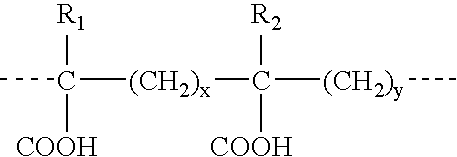Vaccination or immunization using a prime-boost regimen
a technology of immunization and prime, which is applied in the direction of dna/rna vaccination, genetic material ingredients, antibody medical ingredients, etc., can solve the problems of reduced or lost initial immunological activity, toxic chemical compounds at high doses to the transfected cells, and insufficient effectiveness of immunogens derived from pathogens
- Summary
- Abstract
- Description
- Claims
- Application Information
AI Technical Summary
Benefits of technology
Problems solved by technology
Method used
Image
Examples
example 1
Molecular biology methods
[0223] 1.1 Extraction of Viral Genomic DNA
[0224] Viral suspensions were treated with proteinase K (100 mg / ml final) in the presence of sodium dodecyl sulphate (SDS) (0.5% final) for 2 hours at 37.degree. C. The viral DNA was then extracted with the aid of a phenol / chloroform mixture, and then precipitated with two volumes of absolute ethanol at -20.degree. C. for 16 hours and then centrifuged at 10,000 g for 15 minutes at 4.degree. C. The DNA pellets were dried, and then taken up in a minimum volume of sterile ultrapure water.
[0225] 1.2 Isolation of Viral Genomic RNA
[0226] The genomic RNA of each virus was extracted using the "guanidinium thiocyanate / phenol-chloroform" technique described by P. Chomczynski and N. Sacchi (Anal. Biochem. 1987. 162. 156-159).
[0227] 1.3 Molecular Biology Techniques
[0228] All the constructions of plasmids were carried out using the standard molecular biology techniques described by Sambrook et al. (Molecular Cloning: A Laboratory...
example 2
Basic Plasmid Constructs
[0233] The eukaryotic expression plasmid pVR1020 (C. J. Luke et al. J. of Infectious Diseases, 1997, 175, 95-97), derived from the plasmid pVR1012 (FIG. No. 1, FIG. 1 and Example 7 of WO-A-9803 199), contains the coding phase of the signal sequence of the human tissue plasminogen activator (tPA).
[0234] A plasmid pVR1020 is modified by BamHI-BglII digestion and insertion of a sequence containing several cloning sites (BamHI, NotI, EcoRI, XbaI, PmII, PstI, BglII) and resulting from the pairing of the following oligonucleotides:
[0235] PB326 (40 mer) (SEQ ID NO 1)
[0236] 5'GATCTGCAGCACGTGTCTAGAGGATATCGAATTCGCGGCC 3' and
[0237] PB329 (40 mer) (SEQ ID NO 2)
[0238] 5'GATCCGCGGCCGCGAATTCGATATCCTCTAGACACGTGCT 3'.
[0239] The vector thus obtained, having a size of about 5105 base pairs (or bp), is called pAB110 (FIG. No. 2).
[0240] Intron II of the rabbit .beta.-globin gene is cloned into the vector pCRII (Invitrogen, Carlsbad, Calif., USA) after production of the correspond...
example 3
Plasmids Encoding the Various Forms of the Bovine Herpesvirus Type 1 (BHV-1) Antigens
[0252] Fragments of viral DNA containing the gB, gC and gD genes of the B901 strain of BHV-1 are isolated by digesting the viral genome with various restriction enzymes, by separating them by agarose gel electrophoresis and by analysing them by Southern blotting with the aid of probes corresponding to fragments of the gB, gC and gD genes of the ST strain of BHV-1 (Leung-Tack P. et al., Virology, 1994, 199, 409-421). The BHV-1 Colorado strain [Cooper] (ATCC number VR-864) can also be used. The fragments thus identified are cloned into the vector pBluescript SK+ (Stratagene, La Jolla, Calif., USA) and are at the origin of the clonings of the three genes into the expression vector pVR1012.
[0253] 3.1 Plasmids Encoding the Various Forms of BHV-1 gB
[0254] 3.1.1 pPB280: gB Gene (Native Form) Cloned Into the Vector pVR1012
[0255] Two XhoI-XhoI fragments containing the 5' and 3' portions of the BHV-1 gB gene ...
PUM
| Property | Measurement | Unit |
|---|---|---|
| Time | aaaaa | aaaaa |
| Time | aaaaa | aaaaa |
| Time | aaaaa | aaaaa |
Abstract
Description
Claims
Application Information
 Login to View More
Login to View More - R&D
- Intellectual Property
- Life Sciences
- Materials
- Tech Scout
- Unparalleled Data Quality
- Higher Quality Content
- 60% Fewer Hallucinations
Browse by: Latest US Patents, China's latest patents, Technical Efficacy Thesaurus, Application Domain, Technology Topic, Popular Technical Reports.
© 2025 PatSnap. All rights reserved.Legal|Privacy policy|Modern Slavery Act Transparency Statement|Sitemap|About US| Contact US: help@patsnap.com



